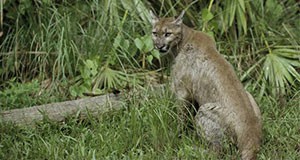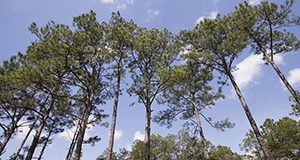A land trust is a private nonprofit organization that owns and manages land to protect its natural, economic, and cultural value. Land trusts may also educate the public about local conservation efforts. This two-page factsheet written by Benjamin W. North and Elizabeth F. Pienaar and published by the UF/IFAS Department of Wildlife Ecology and Conservation explains the important role land trusts play and provides tips on how to establish a land trust to protect land in your community.
http://edis.ifas.ufl.edu/uw436
Tag: Environmental Stewardship
Carbon Stocks on Forest Stewardship Program and Adjacent Lands
Nonindustrial private forestlands in Florida provide many environmental benefits, or ecosystem services. Ecosystem services are benefits from nature that are directly enjoyed, consumed, or used by humans, such as water quality improvement or protection, recreation, biodiversity, and even timber. Another benefit from forests that is gaining interest is their ability to store carbon through the photosynthetic capture of carbon dioxide, a greenhouse gas, in tree, plant, and soil biomass. The carbon dioxide that is stored over the life of a forest, called carbon stocks, is not only important for mitigating greenhouse gas contributions to climate change, but it can also be valued in several markets and incorporated into environmental policy instruments. This 5-page fact sheet was written by Nilesh Timilsina, Francisco J. Escobedo, Alison E. Adams, and Damian C. Adams and published by the UF Department of School of Forest Resources and Conservation April 2017.
http://edis.ifas.ufl.edu/fr384
Conservation Reserve Program: Overview and Discussion

The Conservation Reserve Program, a governmental initiative with the goal of protecting the environment by retiring less productive but environmentally sensitive cropland from production, is by far the largest-scale, biggest-budgeted conservation program in the United States. The program has been a success, improving the land allocation of primary crop production and providing environmental benefits, but it is currently confronted with government budget cuts, and some farmers are reluctant to participate. This 5-page fact sheet written by Juhyun Oh and Zhengfei Guan and published by the Food and Resource Economics Department provides an overview of the Conservation Reserve Program and discusses relevant issues for Florida.
http://edis.ifas.ufl.edu/fe973
FOR212/FR274 Ownership Succession: Plan Now for the Future of Your Land
FOR-212, a 4-page fact sheet by Chris Demers, outlines 8 steps for forestland owners to set up a smooth transition between themselves and the future owners of their property. Includes references. Published by the UF School of Forest Resources and Conservation, March 2009.
http://edis.ifas.ufl.edu/FR274
SL-264/SS485 Cost Share Programs for Florida’s Agricultural Producers and Landowners
SL-264, a 4-page fact sheet by Rao Mylavarapu, Kelly Hines and Alyssa Dodd, describes several conservation programs included in the 2008 Farm Bill — the Environmental Quality Incentives Program (EQIP), Wetlands Reserve Program (WRP), Grassland Reserve Program (GRP), Wildlife Habitats Incentive Program (WHIP), and the Conservation Security Program (CRP) — which may be of high interest to farmers, ranchers, land owners, agricultural consultants, local decision-makers and extension agents. Includes references. Published by the UF Department of Soil and Water Science, October 2008.
http://edis.ifas.ufl.edu/SS485

